News Articles
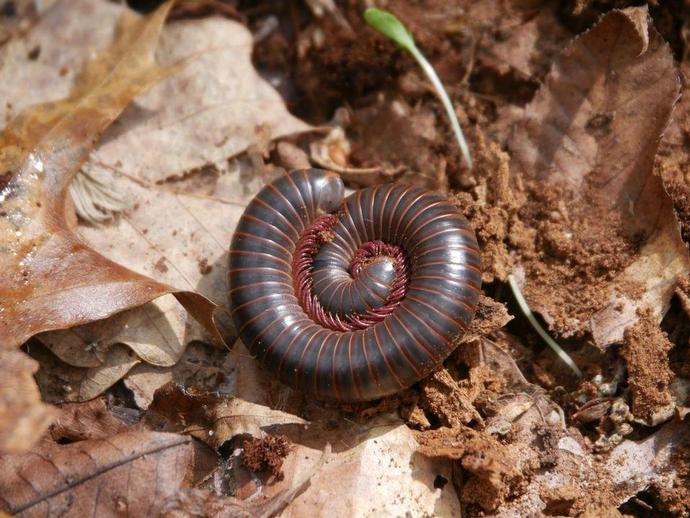
We're reaching into the archives for today's #BenInNature post!
October 31, 2020
We're reaching into the archives for today's #BenInNature post! The following post was originally published on April 9, 2020. Narceus americanus, also known as the American giant millipede or "iron worm," is the biggest millipede you're liable to find on the east coast. These guys can grow up to four inches long! In a previous post, we talked about how many millipedes can release hydrogen cyanide as a chemical defense when they feel threatened. Narceus americanus doesn't release cyanide, but it can release benzoquinones, which are irritating chemicals that smell a bit like chlorine or bleach. You have nothing to fear from the iron worm, however, and it provides a beneficial service. Millipedes eat vast amounts of decaying ...
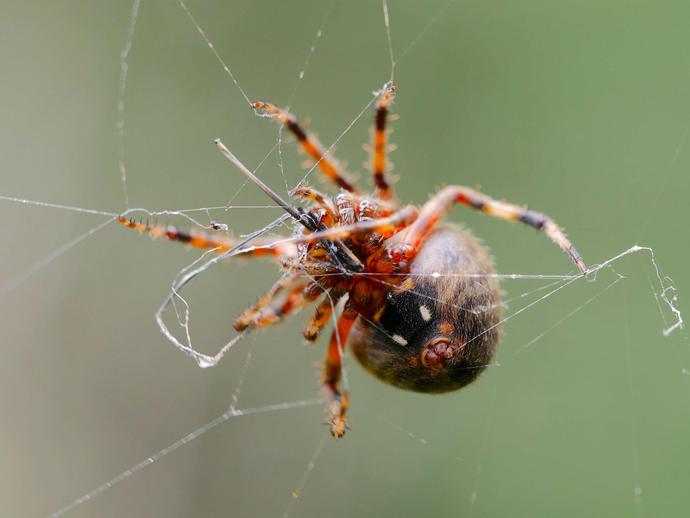
Halloween is almost here, so let's close out the week with one last spider!
October 30, 2020
Halloween is almost here, so let's close out the week with one last spider! This is a Hentz orbweaver (Neoscona crucifera), and it looks extremely similar to the related spotted orbweaver (Neoscona domiciliorum). These sizable orbweaver spiders can be found across most of the U.S. and down into Mexico, and they're active from June through November. Now that fall has arrived, there's a good chance that you've seen either this spider or the spotted orbweaver outside your home. At dusk, these spiders build large wheel-shaped webs and wait in the middle for prey to fly by. When a prey insect smacks into the web, the spider moves into action, biting the insect to immobilize it and then wrapping it in silk. She may eat the meal ...
In this episode of "Museum Minute" ...
October 29, 2020
In this episode of "Museum Minute", VMNH Educator Terri Robertson is on the Fossil Overlook bridge to highlight the museum's display of Pteranodon - an ancient flying reptile that lived during the Late Cretaceous period! SPECIAL OFFERING! The museum's education team will be stationed inside the museum's exhibits tomorrow (Friday, October 30) with a special "Bats" display for visitors to stop by and check out! This special drop-by display will be available any time between 10 a.m. to noon and 1 to 3 p.m. tomorrow and it's included in the price of general admission! ABOUT MUSEUM MINUTE "Museum Minute" is a series of weekly videos produced by VMNH education staff that highlights specimens and displays residing inside the ...
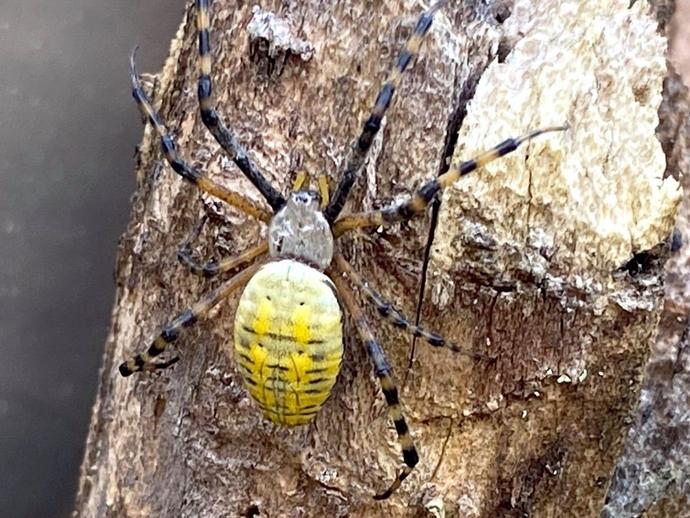
The #BenInNature Pre-Halloween Spooky Spider Countdown continues!
October 29, 2020
The #BenInNature Pre-Halloween Spooky Spider Countdown continues! Today we're looking at the banded garden spider (Argiope trifasciata), a large spider native to North and South America. This spider is not to be confused with the yellow garden spider (Argiope aurantia), which is the large yellow and black spider that you're likely to find building a web near your home. While they belong to the same genus, the banded garden spider tends to avoid building its webs out in the open in the same way that yellow garden spiders do. It's also believed that the banded garden spider prefers a drier habitat. They tend to build their webs in concealed areas in tall grass. Like many orb weavers, the banded garden spider tends to be ...
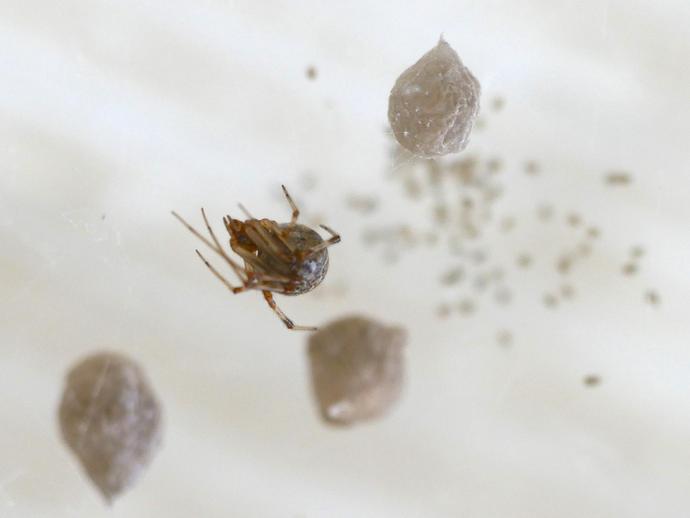
It's time for another #BenInNature update!
October 28, 2020
It's time for another #BenInNature update! Today, we're continuing our Pre-Halloween Spooky Spider Countdown with Parasteatoda tepidariorum, better known as the common house spider! There's a good chance you've seen these little spiders before, and you probably have a few in or around your home (not to freak you out or anything). The common house spider is considered "synanthropic," which means it's a wild species that lives near and benefits from the artificial habitats that humans create. As an example, this particular house spider is one of at least three living on my front porch. However, have no fear; these spiders are both the most common species of spider you're likely to encounter and also the least likely to adopt ...
In this latest episode of "Tales of Ancient Life", Assistant Curator of Paleontology Dr
October 27, 2020
In this latest episode of "Tales of Ancient Life", Assistant Curator of Paleontology Dr. Adam Pritchard and Paleontology Research Volunteer Alicia Lantz put the spotlight on the glamorous world of fossilized animal poop (refered to as coprolites by paleontologists)!
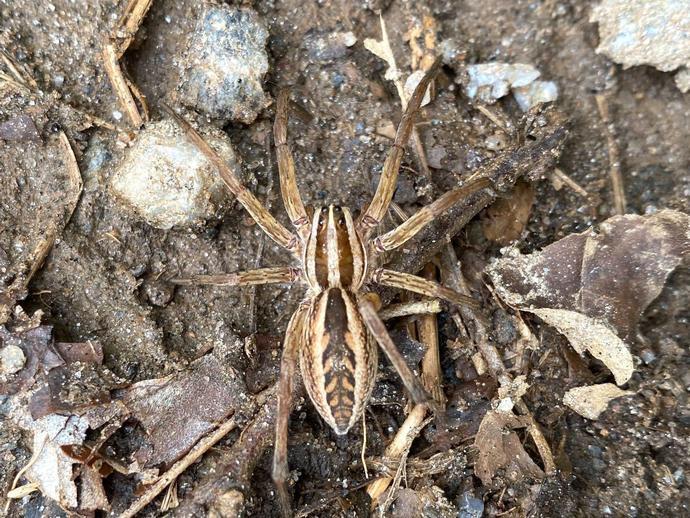
Ben here with today's #BenInNature update!
October 27, 2020
Ben here with today's #BenInNature update! Halloween is my favorite holiday and it's almost upon us! What better way to celebrate than with SPOOKY SCARY SPIDERS?!? My apologies to the arachnophobes out there, but for the rest of this week, we'll be looking at some cool spiders you can find in southwest Virginia! First up is Rabidosa rabida, the rabid wolf spider. Despite the name, these spiders don't carry rabies; the name likely comes from their aggressive behavior toward insects and other spiders. The "wolf" portion of the name comes from the way that wolf spiders hunt; like wolves, they stalk their prey from a distance, remaining concealed until the moment comes to strike. Rabid wolf spiders are very common, and the ...
Help the museum add to our Wild Watersheds exhibit by showing-off your fly tying skills!
October 26, 2020
Help the museum add to our Wild Watersheds exhibit by showing-off your fly tying skills! VMNH is hosting a fly tying contest (www.vmnh.net/fly-tying-contest) to find the best examples of tied flies, which will be included inside the Wild Watersheds exhibit! On Tuesday, October 27th at 6:30pm, Project Healing Waters of Charlottesville (an organization dedicated to the physical and emotional rehabilitation of disabled active military service personnel and disabled veterans through fly fishing) is teaming up with us to provide a live tutorial on how to tie a parachute dry fly, imitating a sulphur mayfly or sulphur dun (Ephemerella dorothea). They will also explore how, with some simple color changes, we can imitate many other ...
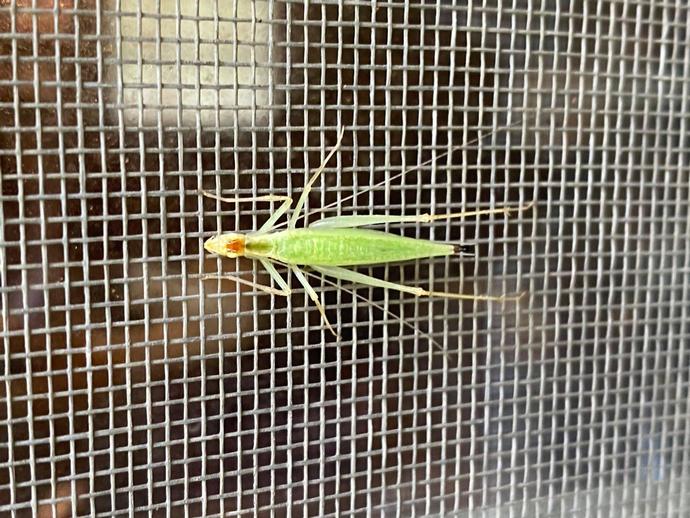
It's time for Monday's #BenInNature update!
October 26, 2020
It's time for Monday's #BenInNature update! This is the narrow-winged tree cricket (Oecanthus niveus), and whenever I see a tree cricket, I think of the late great VMNH Curator of Entomology Dr. Richard Hoffman. If you'll indulge me in a long-winded story, I'll explain why. The summer of my fifth grade year, I volunteered in Dr. Hoffman's lab at the museum's former site on Douglas Avenue. I've always been fascinated by insects, so this was a dream come true for nerdy young Ben (as opposed to nerdy older Ben). My job was simple: Dr. Hoffman would routinely set out pitfall traps for insects, and it was my mission to sort through the bucket of bugs preserved in isopropyl and separate them into piles for him: one pile for ants, ...
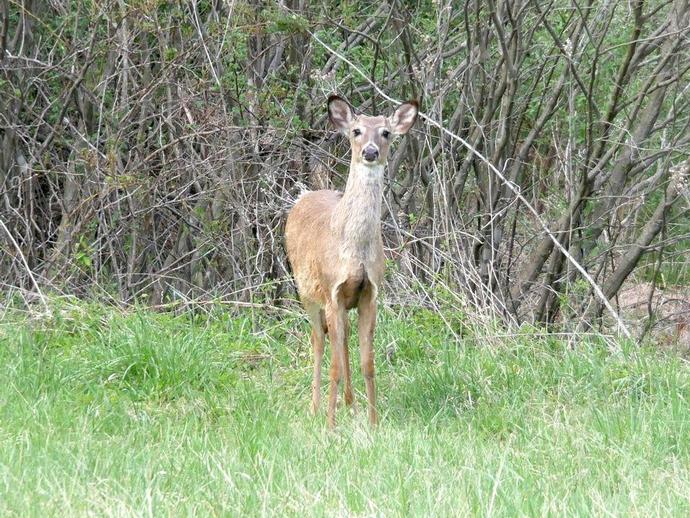
We're reaching into the archives for today's #BenInNature post!
October 25, 2020
We're reaching into the archives for today's #BenInNature post! The following post was originally published on April 8, 2020. The white-tailed deer (Odocoileus virginianus) is truly a majestic animal, unless you manage to snap a photo of one sticking its tongue out. White-tailed deer can be found just about anywhere east of the Rocky Mountains in the U.S.; west of the Rockies, they are replaced by mule deer and black-tailed deer. They can also be found as far south as Bolivia and Peru in South America, and they have been introduced in Cuba, New Zealand, several European countries, and a slew of other places. In southwest Virginia, seeing a white-tailed deer is about as common as seeing a sunrise. A hundred years ago, ...
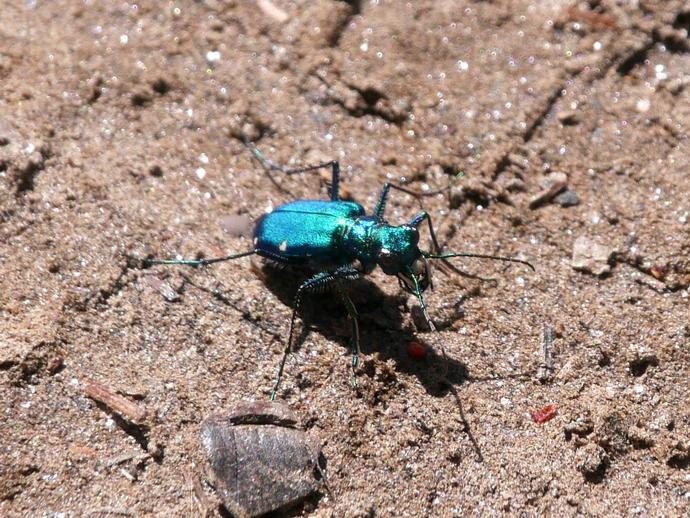
We're reaching into the archives for today's #BenInNature post!
October 24, 2020
We're reaching into the archives for today's #BenInNature post! The following post was originally published on April 7, 2020. The six-spotted tiger beetle (Cicindela sexguttata) may be small, but it's definitely one of the more striking insects you're likely to come across. These beetles are often found in open sunlit areas near or within deciduous forests; I've seen a whole bunch on my gravel road. They move very quickly, and if they're being pursued by a predator they can take flight, although they usually don't fly more than 20 or 30 feet (which is a pretty good distance when you're half an inch long). Most of the time, however, six-spotted tiger beetles are the predators in the equation; those large mandibles aren't ...

Ben here with the Friday edition of #BenInNature!
October 23, 2020
Ben here with the Friday edition of #BenInNature! Yesterday we looked at goldenrod, so today, let's look at a plant that I mistakenly thought was goldenrod until fairly recently! This is wingstem (Verbesina alternifolia), also known as yellow ironweed. Like goldenrod, it also belongs to the family Asteraceae, but the blooms look quite different. Wingstem gets its name from the ridges that run along the stem, which project out far enough that they apparently resemble wings. If you zoom in on the photo, you can see the flange-like ridges running vertically down the stem. These "wings" add a great deal of rigidity to the plant and also help it to grow to great heights; under the right conditions, it can reach as much as ten ...
In this episode of "Museum Minute" ...
October 23, 2020
In this episode of "Museum Minute", VMNH Educator Terri Robertson is in the museum's Fossil Overlook gallery to highlight the ancient marine reptiles known as Icthyosaurs! These now extinct reptiles were most abundant as far back as 251-145 million years ago! SPECIAL OFFERING! The museum's education team will be stationed inside the museum's Fossil Overlook gallery today with a special display of marine fossils for visitors to check out! Be sure to stop by any time between 10 a.m. to noon and 1 to 3 p.m. today for this special offering, which is included in the price of general admission! Additionally, VMNH Educator Kayla Lacy will be inside the museum's exhibit galleries for a special astronomy activity from 10 a.m. to ...
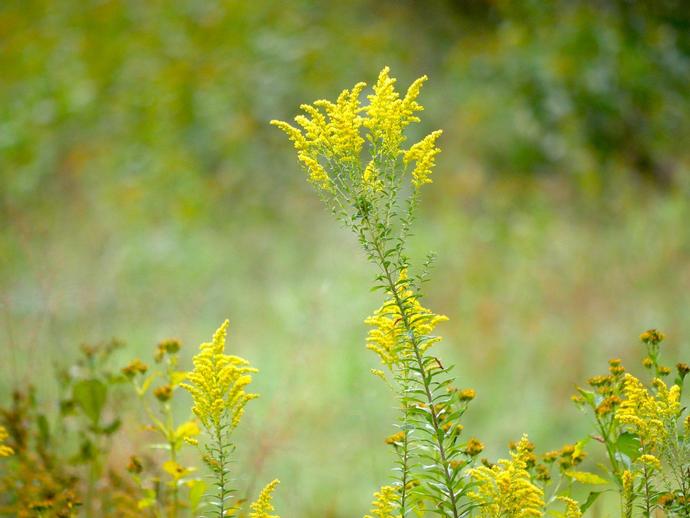
It's time for today's #BenInNature update!
October 22, 2020
It's time for today's #BenInNature update! There are more than 100 different species of goldenrods within the genus Solidago, and this is certainly one of them! It's often difficult to distinguish these plants down to species as many species look extremely similar, but if you see a plant similar to this one with sprays of yellow flowers blooming in late summer to early fall, there's a good chance you've spotted a goldenrod. Most goldenrods are native to North America and they're typically found in open areas such as fields and meadows. When there's plenty of moisture and the weather is warm and sunny, goldenrods produce a great deal of nectar, which makes it an important plant for supporting pollinators. They also provide ...
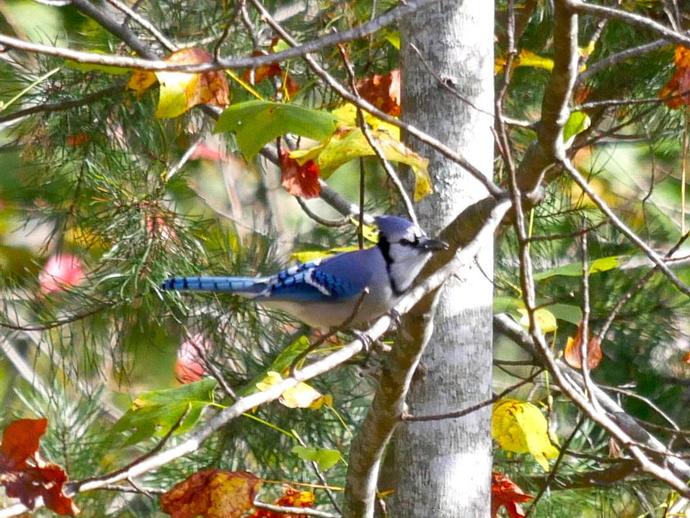
Ben here with Wednesday's #BenInNature update!
October 21, 2020
Ben here with Wednesday's #BenInNature update! For such beautiful birds, blue jays (Cyanocitta cristata) are fairly polarizing, mainly because they're loud and can be aggressive at the feeder, often scaring away other birds. They're also quite territorial, and in some cases, they will even raid the nests of other birds to eat the eggs. However, they also offer benefits to other birds. Blue jays are bold enough to chase off predatory birds such as hawks, and if they see a hawk flying overhead, blue jays will often sound an alarm call. Smaller birds seem to recognize this alarm call and will hide themselves accordingly. You can consider the blue jay the air raid siren of the animal kingdom! Blue jays belong to the family ...
A natural history museum in Waynesboro?
October 20, 2020
A natural history museum in Waynesboro? With approximately 20,000 square feet of dynamic exhibits, classrooms, and scientific laboratories, the proposed Waynesboro campus of the Virginia Museum of Natural History is poised to become a momentous educational asset for all Virginians and a significant, natural resource based, economic development initiative for Central Virginia.
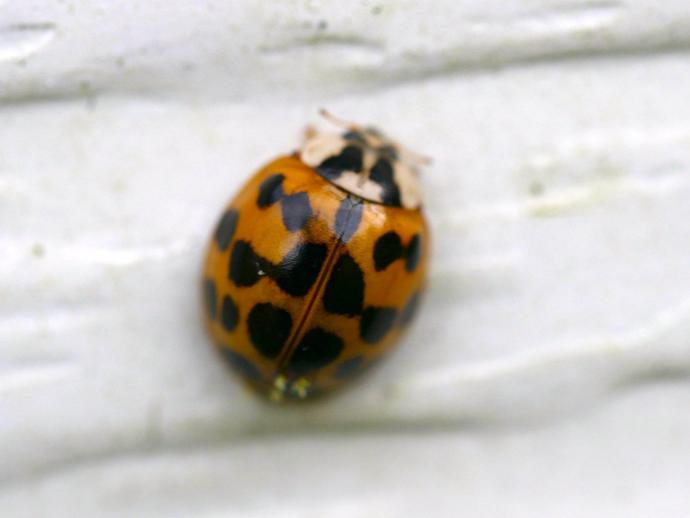
Ben here with Tuesday's #BenInNature update!
October 20, 2020
Ben here with Tuesday's #BenInNature update! I did a nature post about the multicolored Asian ladybeetle (Harmonia axyridis) way back in May, but now seems like a good time to revisit these little guys. Over the last few days, I've noticed that they're all over the outside of my house -- and in fact, if I stand still for too long outside, they'll start landing on me! You've probably also noticed a bunch of these beetles on the outside or inside of your home just lately, and you might be wondering why they're trying to move in. Just to refresh your memory (and mine, for that matter), multicolored Asian ladybeetles were intentionally introduced in the U.S. in 1916 and their population began to explode in the 1980s. While ...

Join VMNH Educator Kayla Lacy this Friday from 10 a
October 20, 2020
Join VMNH Educator Kayla Lacy this Friday from 10 a.m. to noon for a special astronomy activity inside the museum's exhibit galleries! Kayla will be offering a display of astronomy items, such as meteorite casts, as well as a starfinder craft that children can take home! The activity is included in the cost of general admisison. This is a drop-by activity, so feel free to stop by any time between 10 a.m. and noon. We look forward to seeing you here! In the meantime, be sure to check out the VisitMartinsville website for a special blog post highlighting various star gazing opportunities in Martinsville and Henry County! www.visitmartinsville.com/blog/details/id/2383/stargazing-in-mhc
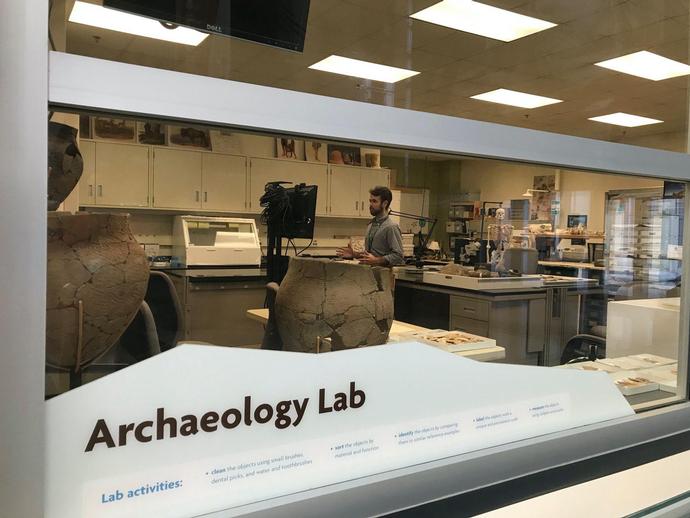
On Saturday, Assistant Curator of Archaeology Dr
October 20, 2020
On Saturday, Assistant Curator of Archaeology Dr. Hayden Bassett provided cultural heritage training to a US Army Reserve unit deploying to East Africa. Dr. Bassett is one of a handful of professionals involved in the revitalization of the Army's "Monuments Men." Popularized by the 2014 movie of the same name, this WWII unit sought to identify and protect fine arts, monuments, historic buildings, artifacts, and archaeological sites from armed conflict in both European and Pacific theaters. This included the creation of detailed maps to avoid damage to important heritage sites, the stabilization of historic buildings, as well as the recovery and restitution of artwork. Today, the mission of the Monuments Men, now called ...
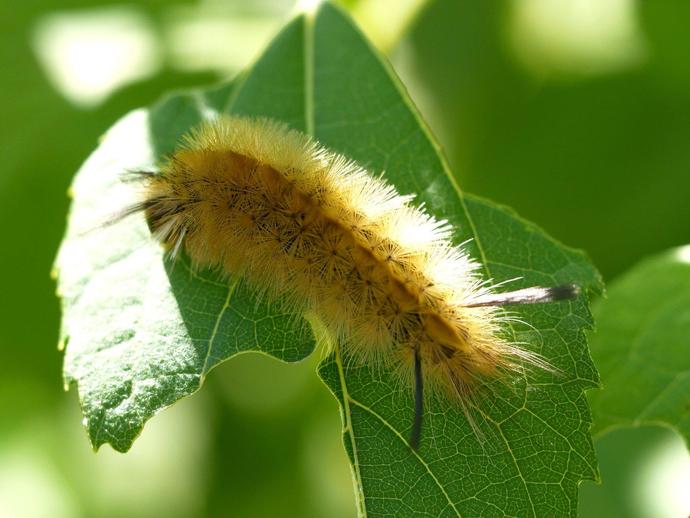
It's time for another #BenInNature update!
October 19, 2020
It's time for another #BenInNature update! The banded tussock moth caterpillar (Halysidota tessellaris) looks like the kind of caterpillar that would really ruin your day if one fell down the back of your shirt. Despite its appearance, however, these caterpillars do not have stinging hairs! While the hairs of almost all caterpillars can cause irritation in individuals with sensitive skin, these little guys are nothing to worry about otherwise. As best I can tell, the chances of having an allergic reaction to a non-venomous caterpillar are about 1 in 100; in other words, they're nothing to flee from in terror, but I wouldn't handle one and then rub my eyes. The banded tussock moth is also known as the pale tiger moth due to ...
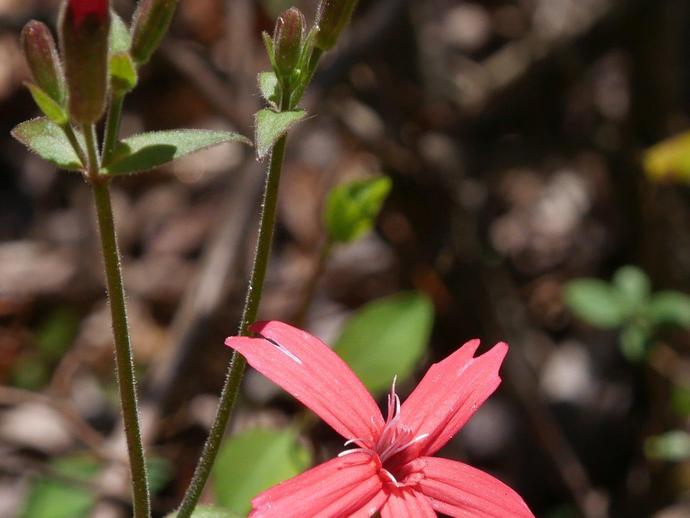
We're reaching into the archives for today's #BenInNature post!
October 18, 2020
We're reaching into the archives for today's #BenInNature post! The following post was originally published on April 6, 2020. Behold the fire pink (Silene virginica)! When I was a little kid, the fire pink was always my favorite wildflower, and my grandma and I would go poking around the old spring every ... spring ... to look for them. Unfortunately, fire pinks are fairly short-lived perennials, lasting only about 2-3 years. I found this one not too far from the old spring, and while it's the first I've encountered so far this year, it will hopefully not be the last. Fire pinks begin blooming in the spring and continue blooming throughout the summer. Their main pollinator is the ruby-throated hummingbird (Archilochus ...
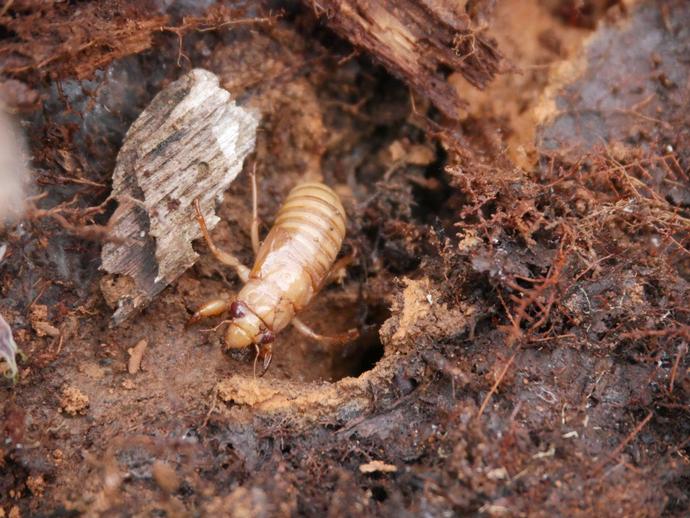
We're reaching into the archives for today's #BenInNature post!
October 17, 2020
We're reaching into the archives for today's #BenInNature post! The following post was originally published April 5, 2020. We've all seen (and certainly heard) adult cicadas, and we routinely see their empty shells on trees, but unless you do a lot of digging in the garden, you're not quite as likely to encounter a cicada nymph. Broadly speaking, we have two different flavors of cicada here in southwest Virginia: Periodic cicadas, which emerge in massive broods every 13 to 17 years, and annual cicadas, which appear in smaller numbers every year. Even annual cicadas are not always truly "annual," though; the annual species live underground as nymphs for anywhere from one to nine years, but they emerge at a staggered rate, ...
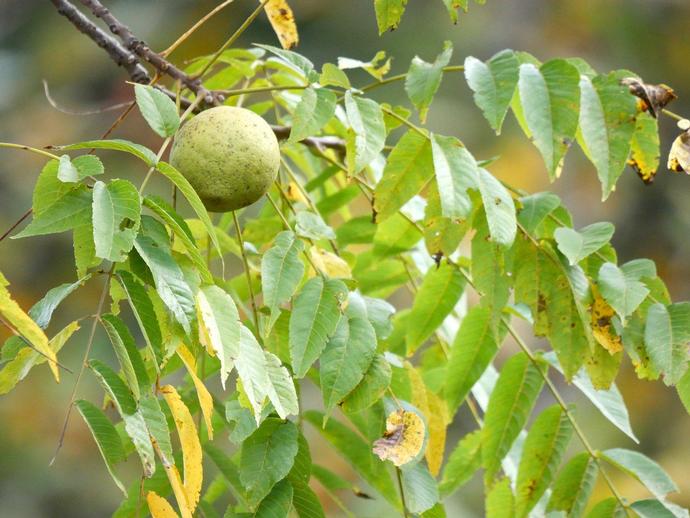
Ben here with the Friday edition of #BenInNature!
October 16, 2020
Ben here with the Friday edition of #BenInNature! The eastern black walnut (Juglans nigra) is fairly widespread in eastern North America, and I have a number of them on my property. The pictured black walnut tree is growing right next to a building with a tin roof, which is unfortunate, because every time the wind blows and a walnut hits the roof I think that I'm under attack. Even though its wood is highly desirable, black walnut is only increasing in numbers in recent years. This is due to a combination of factors. For one, various epidemics have devastated the numbers of a lot of other native trees; Dutch elm disease has hurt elm trees, emerald ash borer beetles have killed ash trees, and Gypsy moths have devastated oak ...
October is Archaeology Month and in this episode of "Museum Minute" ...
October 15, 2020
October is Archaeology Month and in this episode of "Museum Minute", VMNH Educator Terri Robertson highlights the museum's Archaeology Lab, which visitors can view from within the Harvest Foundation Hall of Ancient Life! SPECIAL OFFERING! This Friday and Saturday (October 16 & 17), VMNH educators will be stationed inside the Harvest Foundation Hall of Ancient Life in front of the Archaeology Lab with a special display of artifacts from the education collections for visitors to view! Be sure to stop by anytime between 10 a.m. to noon and 1 to 3 p.m. tomorrow and Saturday for this special offering, which is included in the price of general admission! ABOUT MUSEUM MINUTE "Museum Minute" is a series of weekly videos produced ...
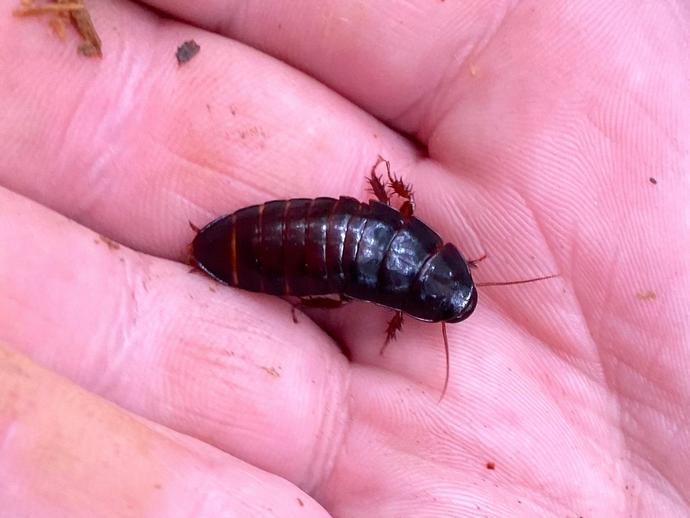
It's time for another #BenInNature update!
October 15, 2020
It's time for another #BenInNature update! Roaches rank pretty low when it comes to beloved insects, but believe it or not, you might actually like this roach (or at least respect it)! This is Cryptocercus punctulatus, also known as the wood roach or brown-hooded cockroach, and unlike a lot of roaches, it has no interest in moving into your home. In fact, it requires so much moisture and such specific conditions that it can't survive or breed inside your house! The easiest way to tell that you have a wood roach on your hands is that they don't have wings. As the name suggests, wood roaches feed on rotting wood. However, they are physically incapable of digesting cellulose, which is a pretty big problem if you eat wood. ...
JOB OPPORTUNITY: Myriapodologist The museum is seeking a dynamic individual to complement the ...
October 15, 2020
JOB OPPORTUNITY: Myriapodologist The museum is seeking a dynamic individual to complement the Associate Curator of Recent Invertebrates in conducting research, cataloguing specimens, writing grant proposals, reports, and scholarly articles, and performing field and laboratory work with a strong focus on the Commonwealth of Virginia.
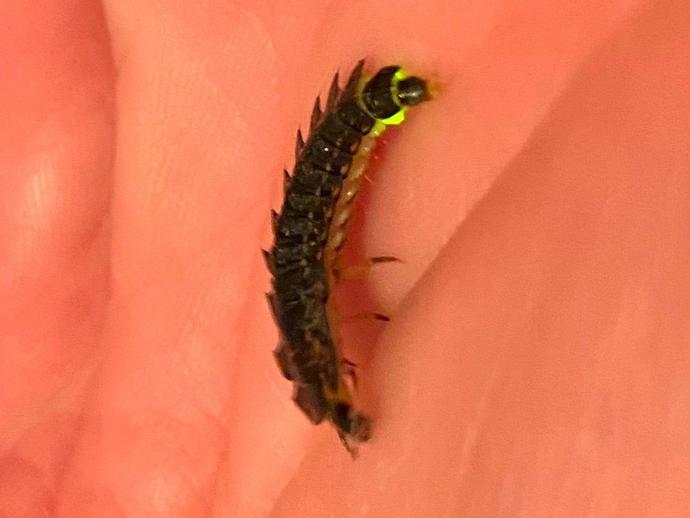
Ben here with Wednesday's #BenInNature update!
October 14, 2020
Ben here with Wednesday's #BenInNature update! We're all familiar with adult lightning bugs, but have you ever seen a larval lightning bug? According to VMNH Collections Assistant Dr. Jackson Means, this firefly larva likely belongs to the genus Photuris, also known as the "femme fatale" lightning bugs. This is because the adult females imitate the light signals of other species' females in order to lure in unrelated males and eat them! Adult fireflies are active during the summer, and as summer winds to a close, the females lay eggs in leaf litter. The eggs hatch just a few weeks later and the wingless larvae begin crawling through the leaf litter hunting other small invertebrates. In late fall, these larvae burrow into ...
On Tuesday, October 13, Dr
October 13, 2020
On Tuesday, October 13, Dr. Adam Pritchard, Assistant Curator of Paleontology, presented "500 Million Years in the Shenandoah Valley: Stories from the Fossil Record" at the Wayne Theatre in Waynesboro, Virginia.
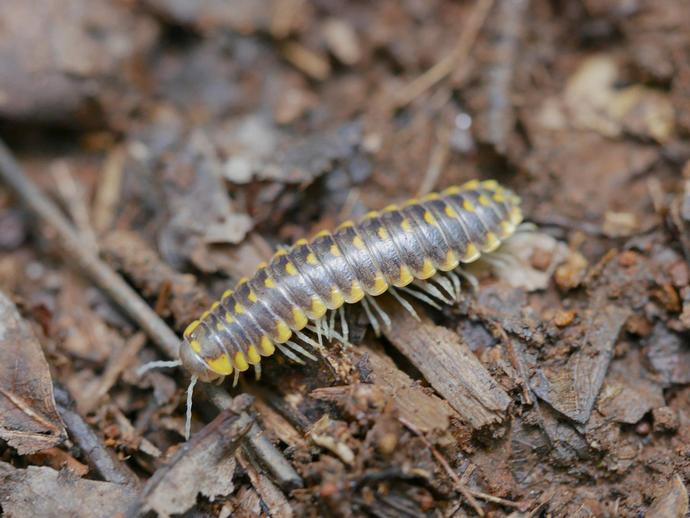
Ben here with another #BenInNature update!
October 13, 2020
Ben here with another #BenInNature update! This is Apheloria virginiensis, and it's one of the most widespread millipedes in the eastern U.S. Dr. Jackson Means, who is a Collections Assistant at VMNH and an expert on millipedes, filled me in on some interesting facts about this little guy! According to Dr. Means, this species can be found from northern New York all the way down to northern North Carolina, which is a very wide range for a millipede; they're usually restricted to fairly small areas. Despite that, there is still a lot to learn about this species. Millipedes are scavengers that eat decaying leaves and plant material, and you don't have to worry about getting bitten by one. However, they aren't defenseless. ...
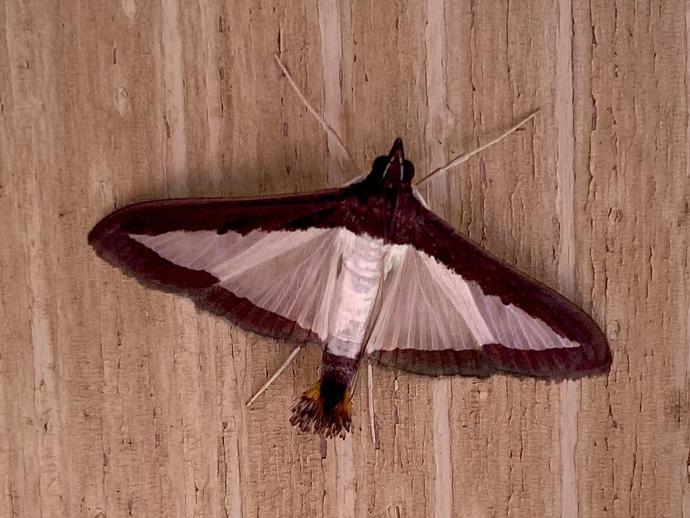
Ben here with another #BenInNature update!
October 12, 2020
Ben here with another #BenInNature update! The melonworm moth (Diaphania hyalinata) can be found throughout much of eastern North America, and its caterpillars can be a real pest if you have a garden. Melonworm caterpillars will eat the leaves of cucumbers, squash, pumpkins, and -- of course -- melons. However, the caterpillars aren't as big of an issue in the northern parts of the moth's range. In Virginia, you'll likely only see these moths in October and November. However, in the warmer Gulf states, melonworm moths produce multiple generations per year and can be found all year long! Of course, one of the first things you might have noticed about this striking little moth is its unusual rear end. Those bristly ...
We had an amazing time in Waynesboro yesterday!
October 11, 2020
We had an amazing time in Waynesboro yesterday!
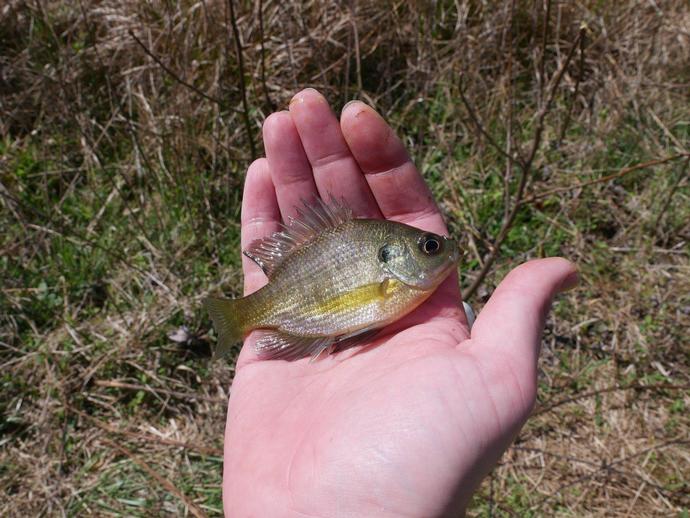
We're reaching into the archives for today's #BenInNature post!
October 11, 2020
We're reaching into the archives for today's #BenInNature post! In the early 1990s, my grandfather dug out a pond on the old family property. Every time he went fishing, he would take a few fish out of the livewell and toss them in the pond, mostly bluegill and catfish. I don't know that any catfish are still in the pond, but nearly 30 years later, there's still a healthy population of bluegill. Bluegill (Lepomis machrochirus) are members of the sunfish family Centrarchidae. They are native to North America and can be found in any number of streams, rivers, lakes and ponds east of the Rocky Mountains (although they have been introduced west of the Rockies as well). Under the right conditions, bluegill can grow up to 12 ...

A little rain isn't dampening the fun today at the Waynesboro Drive-thru Dinosaur Experience!
October 10, 2020
A little rain isn't dampening the fun today at the Waynesboro Drive-thru Dinosaur Experience! If you have tickets to today's event, we hope to see you here!

If you have tickets for today's Waynesboro Drive-thru Dinosaur Experience ...
October 10, 2020
If you have tickets for today's Waynesboro Drive-thru Dinosaur Experience, don't let a little rain prevent you from attending! Our crew of curators and staff are ready to go!
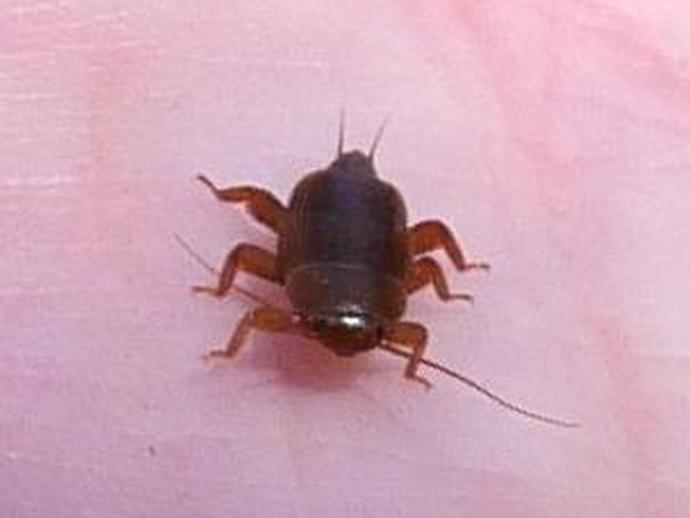
We're reaching into the archives for today's #BenInNature post!
October 10, 2020
We're reaching into the archives for today's #BenInNature post! At first glance, this little guy might look like a cockroach. According to VMNH Associate Curator of Invertebrate Zoology Dr. Kal Ivanov, this is actually a stonefly from the family Peltoperlidae, which are known as the "roach-like stoneflies." Dr. Ivanov said this one is probably Tallaperla maria, the common roachfly. Despite that horrifying name, this fellow isn't closely related to cockroaches, it just bears a superficial resemblance. Stoneflies fall under the insect order Plecoptera, which contains some 3,500-plus species. Stoneflies are one of the most primitive groups of winged insects, and their close relatives have been found in Carboniferous and Permian ...
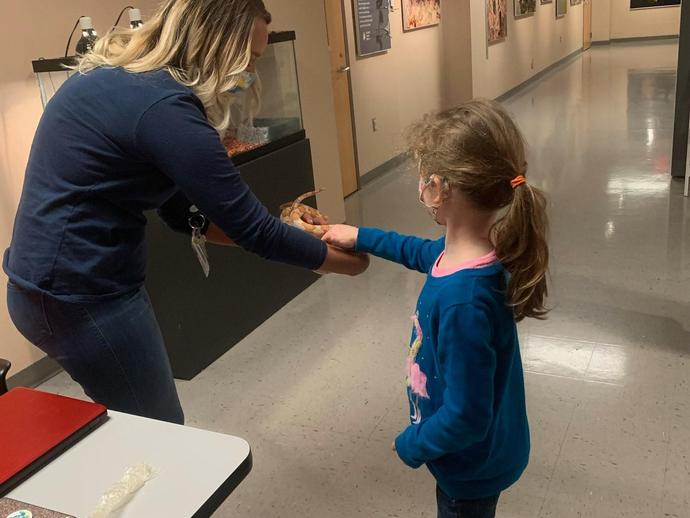
VMNH Educator Terri Robertson was inside the Suzanne M
October 9, 2020
VMNH Educator Terri Robertson was inside the Suzanne M. Lacy Education Center today showing off the museum's resident corn snake, Corny! Many people have a fear of snakes, but not this young visitor!
Assistant Curator of Paleontology Dr
October 9, 2020
Assistant Curator of Paleontology Dr. Adam Pritchard continues putting the spotlight on ancient marine animals this week by highlighting fossil rays in his latest episode of "Tales of Ancient Life"!
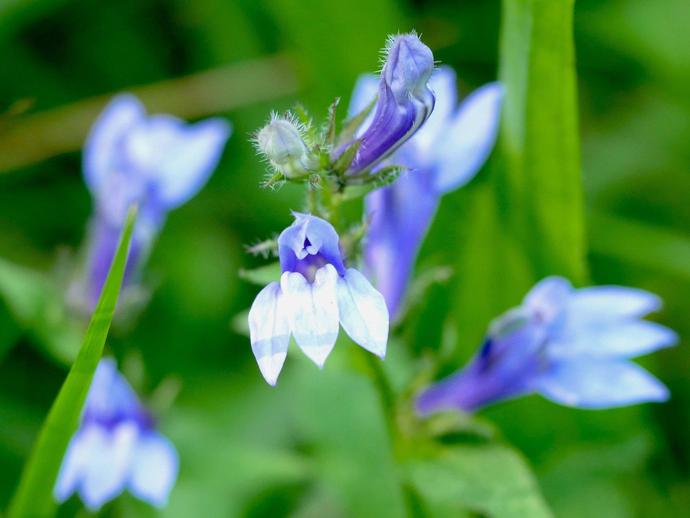
Ben here with Friday's nature update!
October 9, 2020
Ben here with Friday's nature update! There are more than 400 species of Lobelia worldwide, but downy Lobelia (Lobelia puberula) is the one you're most likely to encounter in southwest Virginia. It's the most common Lobelia in the Southeast, and it's usually in bloom from July through October. Downy Lobelia tends to grow in damp areas with sun or partial shade, such as riverbanks, boggy areas, and even roadside ditches. I found this one at the edge of a hayfield about three feet from a creek. While it isn't quite as dramatic as its relative, the great blue Lobelia (Lobelia siphilitica), it's a great native plant to have in your garden. It draws butterflies and hummingbirds; it's tolerant of a variety of soils; and it's ...
In this latest episode of "Museum Minute" ...
October 9, 2020
In this latest episode of "Museum Minute", VMNH Educator Kayla Lacy highlights the museum's resident corn snake, Corny, which can be found inside the museum's Suzanne M. Lacy Education Center! Visitors to VMNH today (10/9/20) will have a special opportunity to meet Corny! Museum educators will be on hand to show-off Corny, while teaching visitors about some of the unique characteristics of corn snakes. Stop by anytime between 10 a.m. to noon and 1 to 3 p.m. today to say "hi" to Corny! ABOUT MUSEUM MINUTE Museum Minute is a video series produced by VMNH education staff that highlights specimens and displays that reside inside the museum's exhibit galleries.
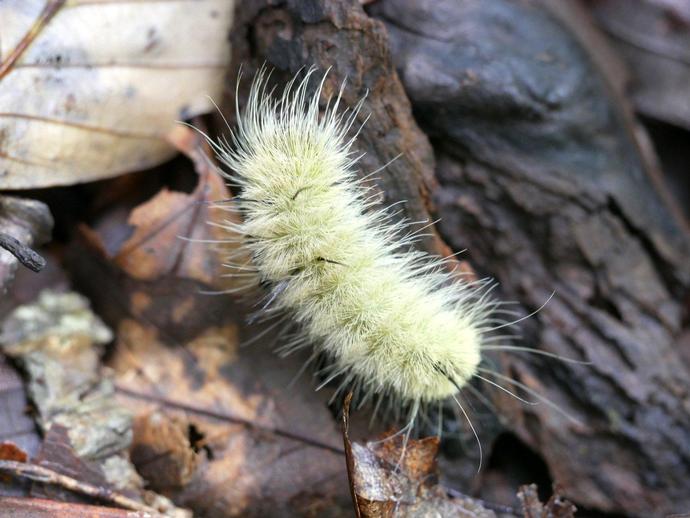
Ben here with today's #BenInNature update!
October 8, 2020
Ben here with today's #BenInNature update! The American dagger moth caterpillar (Acronicta americana) definitely looks like the kind of caterpillar that would ruin your day if you were to touch it. However, while you shouldn't touch unfamiliar caterpillars since many have venomous spines, this little fellow does not (although there are reports that its hairs can cause skin irritation, so you should still be careful if you have sensitive skin). American dagger moth caterpillars can be found from July through October, while the adult moths can be spotted from April through September. These moths are fairly widespread east of the Rocky Mountains. The caterpillars are pale yellow to white in color and grow about two inches ...
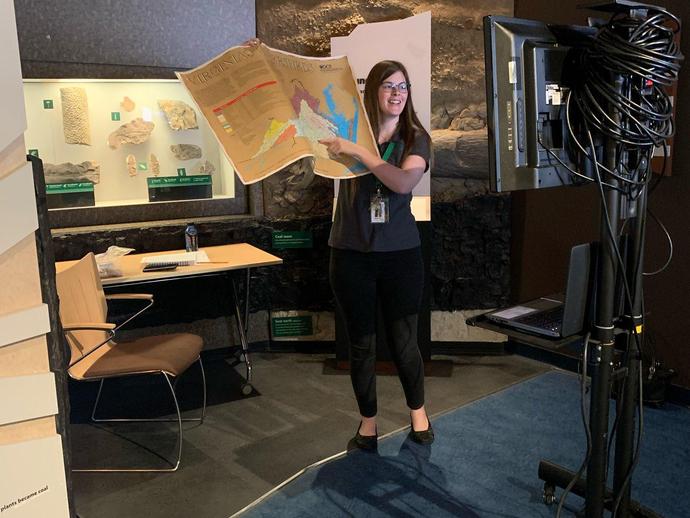
The museum's education team was inside the museum's Uncovering Virginia exhibit near the Grundy ...
October 7, 2020
The museum's education team was inside the museum's Uncovering Virginia exhibit near the Grundy display to conduct today's Virtual Homeschool Science & Engineering Academy program, "Botany: Plant Basics"! In these pictures, Educator Kayla Lacy is showing a watershed map to discuss the role plants play in preventing soil erosion. Educator Terri Robertson (white t-shirt) is showing various seeds and how they are dispersed. VMNH Education Manager Christy Deatherage is showing a cross section of a tree, while talking about the movement of nutrients through plants. The Homeschool Science & Engineering Academy provides engaging science and engineering programs for homeschool students on the first and third Wednesday of each ...
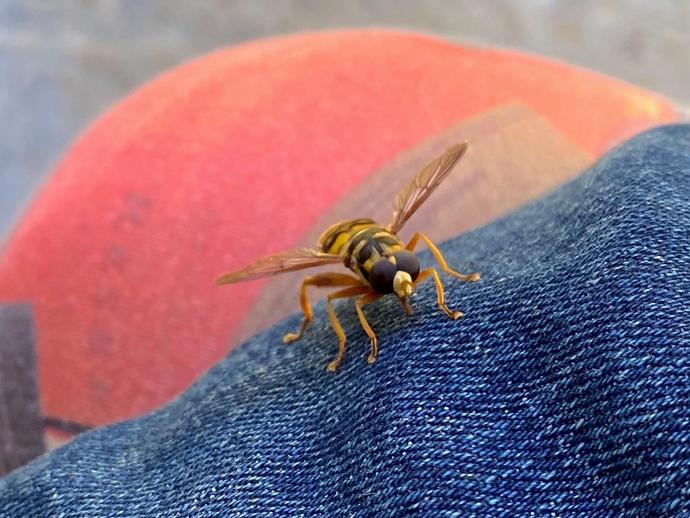
It's time for another #BenInNature update!
October 7, 2020
It's time for another #BenInNature update! I was sitting on my back porch yesterday when this Virginia flower fly (Milesia virginiensis) came to visit, first by hovering near me and staring at me intently, then by landing on the sleeve of my jacket. While it may look like a yellowjacket at first glance (and is sometimes known as a "yellowjacket hoverfly"), these little guys are perfectly harmless! The Virginia flower fly is a hoverfly in the family Syrphidae, and the adults spend their time feeding on nectar and pollen from flowers. There are more than 6,000 species of hoverflies around the world, but virtually all of them have one thing in common: they look like stinging insects, but they don't have stingers themselves! ...
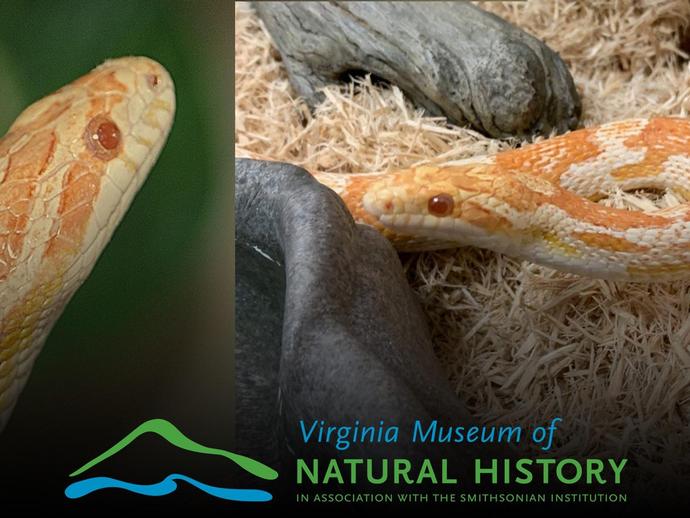
Visitors to the museum this Friday will have a special chance to meet Corny - the museum's ...
October 7, 2020
Visitors to the museum this Friday will have a special chance to meet Corny - the museum's resident corn snake - inside the museum's Suzanne M. Lacy Education Center! Museum educators will be on hand to show-off Corny, while teaching visitors about some of the unique characteristics of corn snakes. Stop by anytime between 10 a.m. to noon and 1 to 3 p.m. this Friday (10/9/20) to say "Hello!" to Corny!
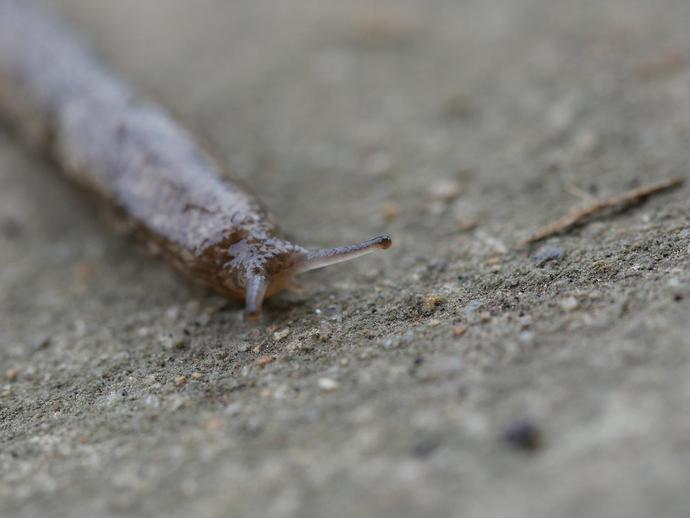
Ben here with another #BeninNature update!
October 6, 2020
Ben here with another #BeninNature update! Yesterday we looked at snails, so it seems fitting that we follow that up by looking at slugs! While people tend to think snails are cute, people generally find slugs kind of revolting. Case in point: while there is a hilarious 1988 horror movie called "Slugs" about bloodthirsty killer slugs, the only movie about snails I'm familiar with is 2013's "Turbo," which is about a plucky snail who believes in himself and follows his dreams. It seems kind of unfair when you consider that the main tangible difference between the two molluscs is a shell -- and believe it or not, most slugs have a shell as well, only they keep it inside their body! In most species of slug, there is a small ...
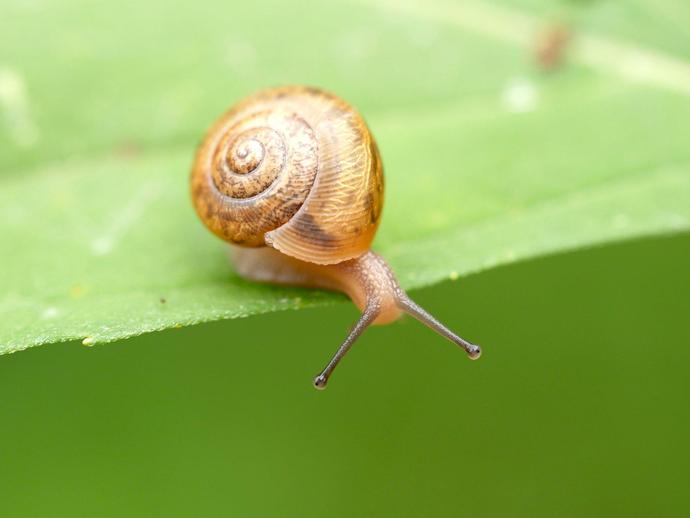
Ben here with another #BenInNature update!
October 5, 2020
Ben here with another #BenInNature update! As fascinating as they are surprisingly delicious, there are more than 35,000 different species of land snail and they can be found on every continent except Antarctica! The defining feature of a land snail is its shell, which provides a number of benefits and a couple of drawbacks. Shells keep snails moist and protect them from predators, but they also limit their mobility and size. Aquatic snails don't have those same problems since they can rely on buoyancy to help them haul their shells around. While the largest sea snail (Syrinx aruanus, the Australian trumpet snail) can grow to as much as three feet long, the largest land snail (Achatina achatina, the African giant snail) ...
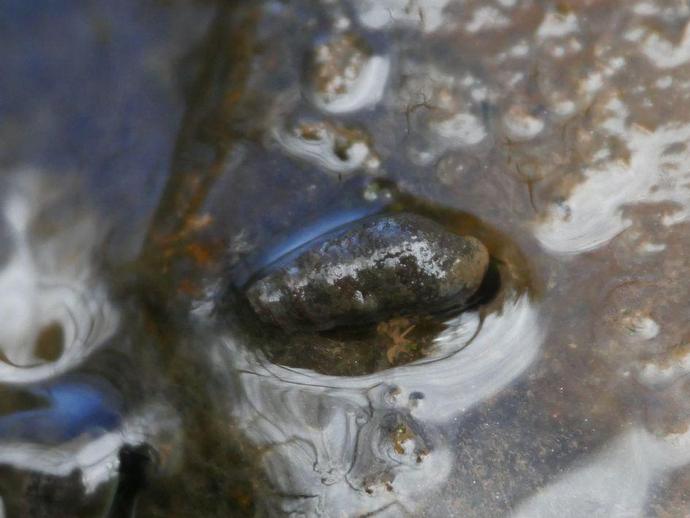
#BenInNature These small aquatic snails are almost certainly from the family Pleuroceridae ...
October 4, 2020
#BenInNature These small aquatic snails are almost certainly from the family Pleuroceridae, which are only found in Eastern North America. Most snails in this family live in streams and rivers, although a handful of species are adapted to living in lakes and reservoirs. These snails have what's known as an "operculum," which is sort of like a trapdoor that allows the snail to completely seal itself up within its shell to deter predators. The operculum is connected to the snail's foot and is pulled closed when the snail retreats into its shell. They scrape algae off of rocks using their radula, which is a ribbon-like tongue studded with tiny teeth. Snails are sensitive to pollution, so if you find small freshwater snails like ...
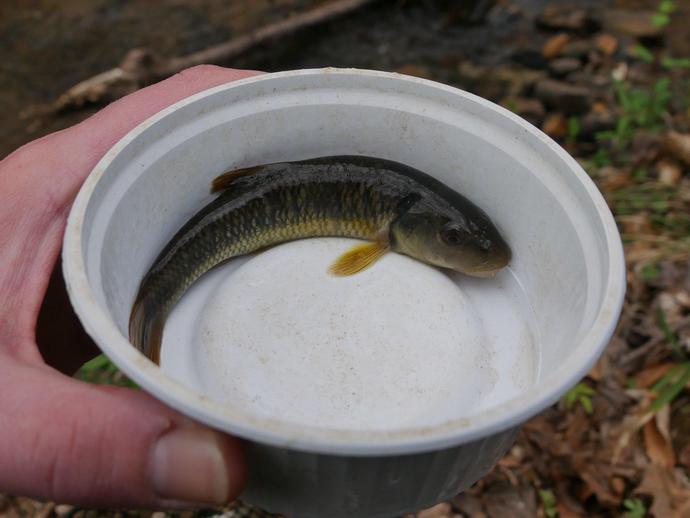
#BenInNature According to Kyle Snow ...
October 3, 2020
#BenInNature According to Kyle Snow, a fish expert from James Madison University, this is probably a bull chub (any uncertainty is the result of my photography, not his expertise). I caught this one in a small creek using a minnow trap. When we think of the types of fish that can commonly be found in creeks and streams, we generally think of tiny minnows. However, there are some pretty sizeable members of the minnow family (Cyprinidae) and the bull chub (Nocomis raneyi) is a great example. The family Cyprinidae contains not only minnows, but also carp. It's the largest and most diverse family of fish, with more than 3,000 recorded species divided into 370 genera. The most impressive member of Cyprinidae is probably the ...
VMNH Educator Kayla Lacy highlights the iconic giant ground sloth (affectionatly known as ...
October 2, 2020
VMNH Educator Kayla Lacy highlights the iconic giant ground sloth (affectionatly known as "Clawd") found inside the museum's Harvest Foundation Hall of Ancient Life in this latest episode of "Museum Minute"! "Museum Minute" is a video series produced by VMNH education staff that highlights specimens and displays that reside inside the museum's exhibit galleries.
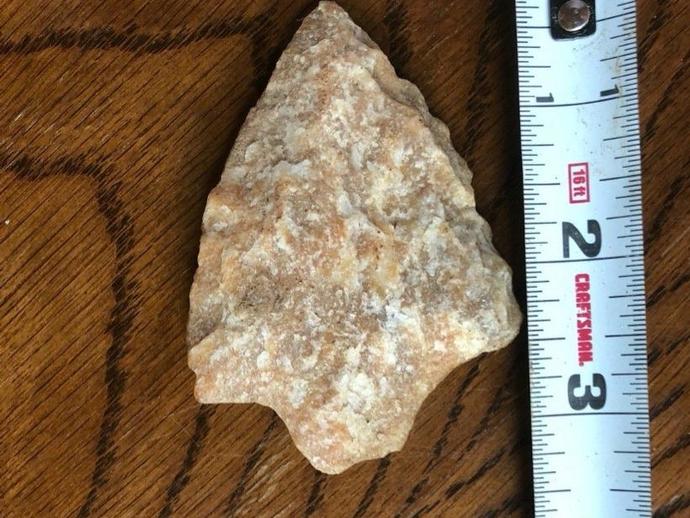
VMNH Assistant Curator of Archaeology Dr
October 2, 2020
VMNH Assistant Curator of Archaeology Dr. Hayden Bassett traveled to a Henry County (Virginia) resident's property this week to survey a plowed field that recently exposed artifacts. This photo was provided by the landowner. VMNH commends the property owner for immediately contacting the museum to report this find. The landowner located a "projectile point," the shape and size of which fits into Virginia's established typology. While these artifacts are commonly referred to as "arrowheads," many (such as this one) pre-date bow and arrow technology, and are actually spear or dart points. Archaeologists therefore generally refer to these types of artifacts as "projectile points." Dr. Bassett identified the projectile point ...
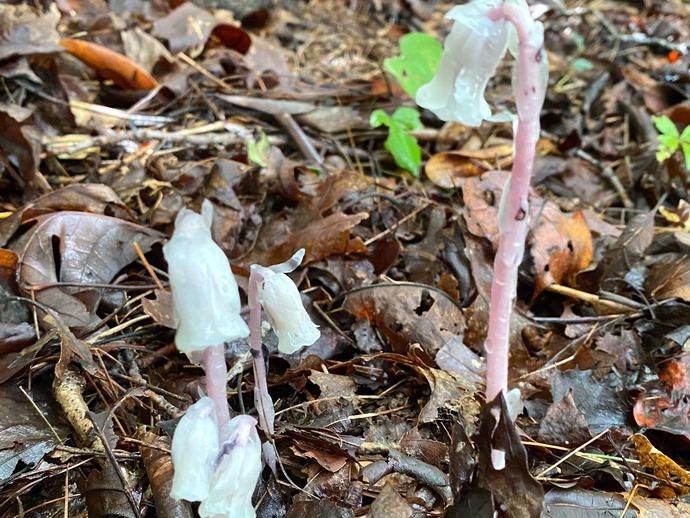
I realize the suspense has been unbearable ...
October 2, 2020
I realize the suspense has been unbearable, but today I can finally reveal my number one favorite find from Saturday's Virginia BioBlitz 2020! This is Monotropa uniflora, also known as Indian pipe or ghost pipe, and it is a very unusual plant! Indian pipe is white or pinkish-white in color because it doesn't contain chlorophyll, which is what gives plants their green color. So how does it absorb sunlight and undergo photosynthesis, you might wonder? The answer: it doesn't! Indian pipe is a parasitic plant, and it gets its energy by parasitizing certain types of fungi. The fungi that it parasitizes are parasites themselves, and they get THEIR energy from tree roots, especially those of beech trees. The trees get their ...
Archives
2025
2024
2023
2022
2021
2020
2019
2018
2017
2016
2015
2014
2013
2012
2011
2010
2009
2008

Please Visit Us Soon
Hours:
Tuesday - Saturday: 10am - 4pm
Sunday - Monday: Closed
Admission:
$10 for ages 18-59
$5 for ages 3-17, seniors 60+, and college students
FREE for children under 3, museum members, and members of ASTC participating institutions
My 4 year old son loves going to the museum. The exhibits are educational, interactive and kid-friendly.
”

 Hours & Admissions
Hours & Admissions Directions
Directions